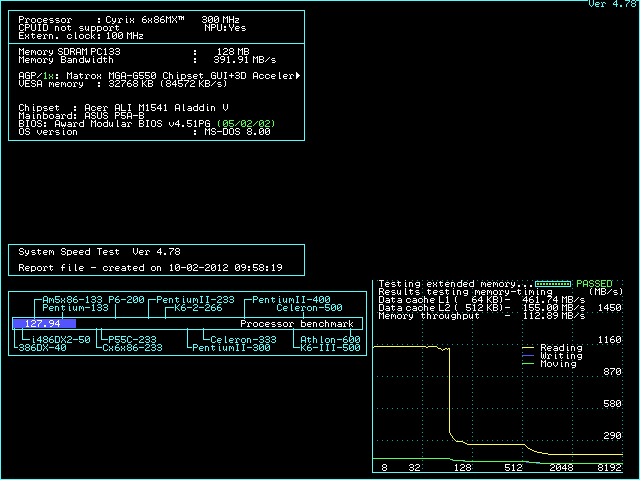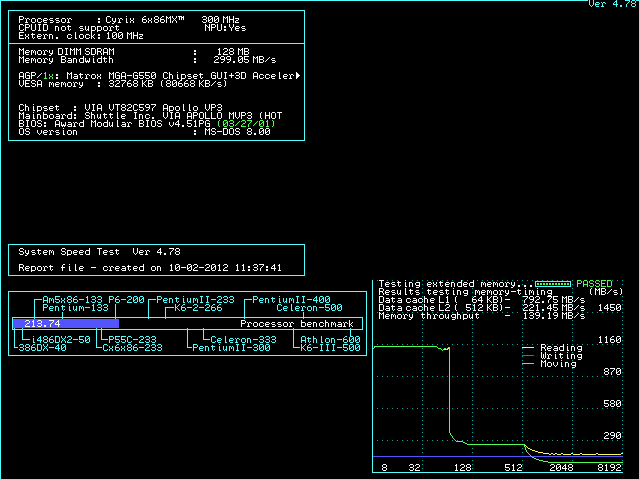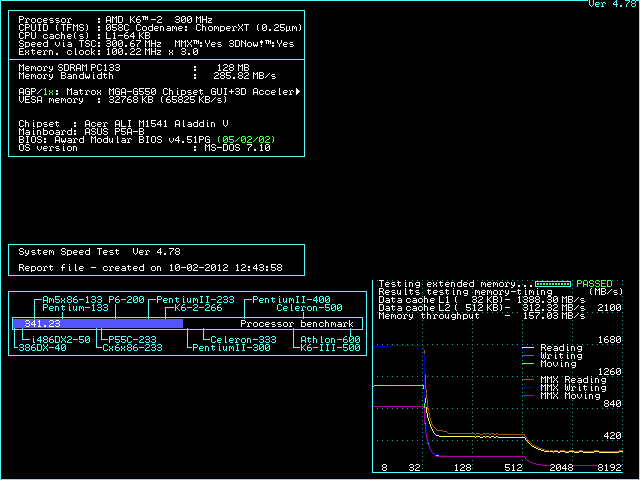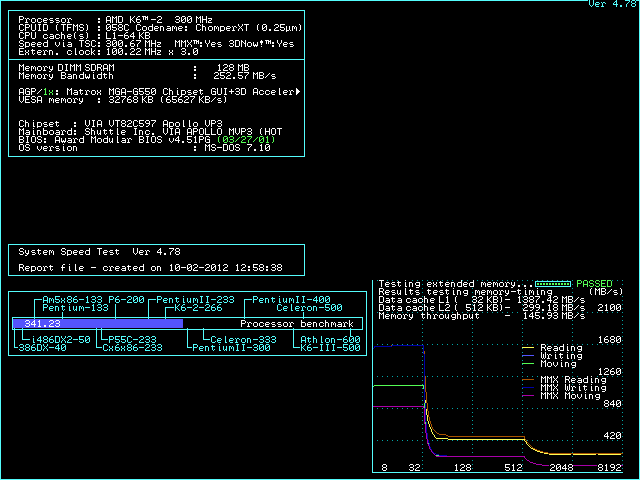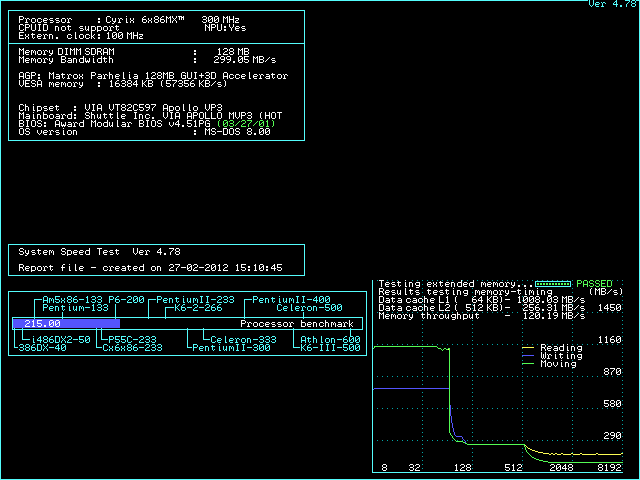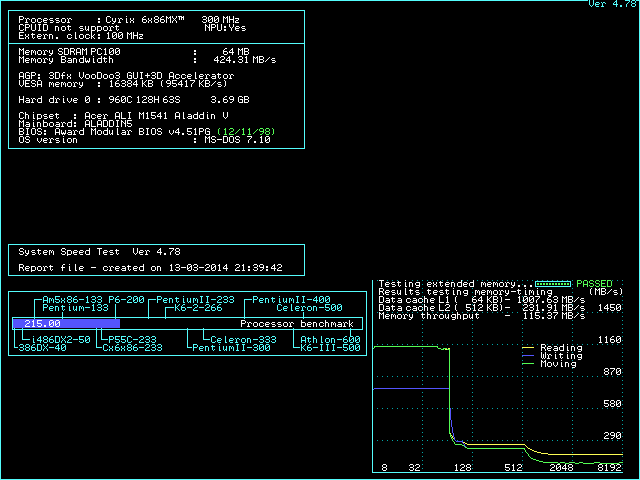Reply 40 of 82, by feipoa
- Rank
- l33t++
Here are the register differences I've noticed between the VIA (HOT-591P) and ALi (ASUS-P5A-B) motherboards,
VIA ALI FEATURE1 0 NoLock (CCR1)0 1 SADS (CCR2)0 1 LINBRST (CCR3)1 0 TOGGLE (CCR4)0 1 WTALLOC (CCR5)0 1 RCD (RCR2)0 1 RCD (RCR4)0 1 RCD (RCR5)0 1 RCD (RCR6)1 0 WL (RCR7)11 00 BIT 37 & 38 (MSR10 MSB)SEVERAL Several BITS (MSR10 LSB)
I haven't studied in depth what each feature is responsible for, but the information can be found in the BIOS WRITER'S GUIDE for the MII.
What is surprising is that LINBRST is disabled for the VIA board and enabled for the ALi board.
I have attached Speedsys images of the Cyrix MII-433 in both the VIA and ALI board's. Something funny (slow) is going on with the 'Move' speed graph. The overall Speedsys score of the MII-433 seems to weigh in at about a Cyrix 6x86-200PR, which is very peculiar. I wonder if disabling CPUID screws up the Speedsys score? The MII-433 should be around a Pentium II-400.
Plan your life wisely, you'll be dead before you know it.
